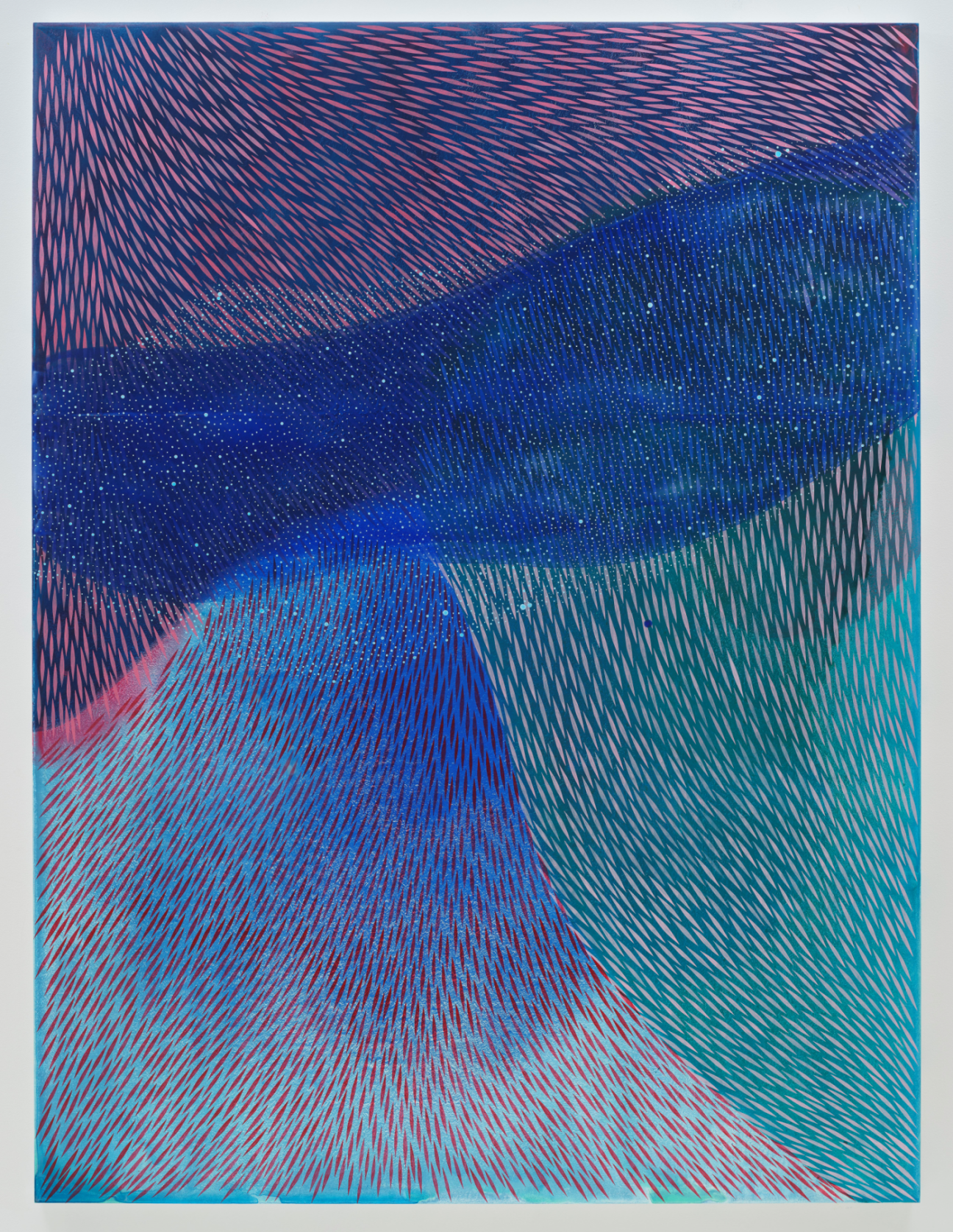
Judging strictly from their art, KAWS and Julia Chiang are not an obvious match.
KAWS makes a range of multimedia work, from pint-size toys to monumental sculptures, inspired by comic books, Pop art history, and streetwear culture. Chiang makes intricate ceramics and paintings of organic forms and overlapping pools of color. With a shared attention to detail and affection for bright hues, they aren’t quite opposites—but they are far from self-evident companions. That only holds true in art, however. In life, the couple have been together for 15 years and share two children. This summer, their work lives will come together when they are the subject of parallel solo exhibitions at Water Mill’s Parrish Art Museum.
To mark the unusual occasion, CULTURED asked Chiang to interview KAWS and KAWS to interview Chiang. Below, each reveals a few bits about themselves that the other never knew.

JULIA CHIANG ASKS KAWS
Julia Chiang: Did you ever imagine we’d be showing at the same time in the same place?
KAWS: I kind of knew it would happen eventually, but I think we usually make a point not to overlap our work lives. This came about pretty organically, and I’m happy that we can be in the same place at the same time for once!
Chiang: It’s funny because we don’t visit regularly out here, and when we come out, we always are in traffic right in front of the Parrish. We’ve gone in sometimes without planning to, and it has always been so memorable seeing friends by chance or discovering an artist we didn’t know.
KAWS: I do hope there are a lot of families that unexpectedly walk into our shows. We often use museums as a destination, with our kids not knowing what exhibitions are up. I like that element of surprise.
Chiang: Does what you make have a sense of place? Not necessarily human qualities but a connection to where it is? I think all the artwork while at the Parrish must feel good, taking in the light. When it leaves here, the work will have had a nice retreat.
KAWS: Ha, yes, that’s part of the reason I titled my show “TIME OFF.” It came from one of the sculptures in the show that has a particularly relaxed presence, but I also think time off is something I need at the moment. So, we can enjoy a week or two out East, but the works can stay the whole summer and come home and tell us all about it.
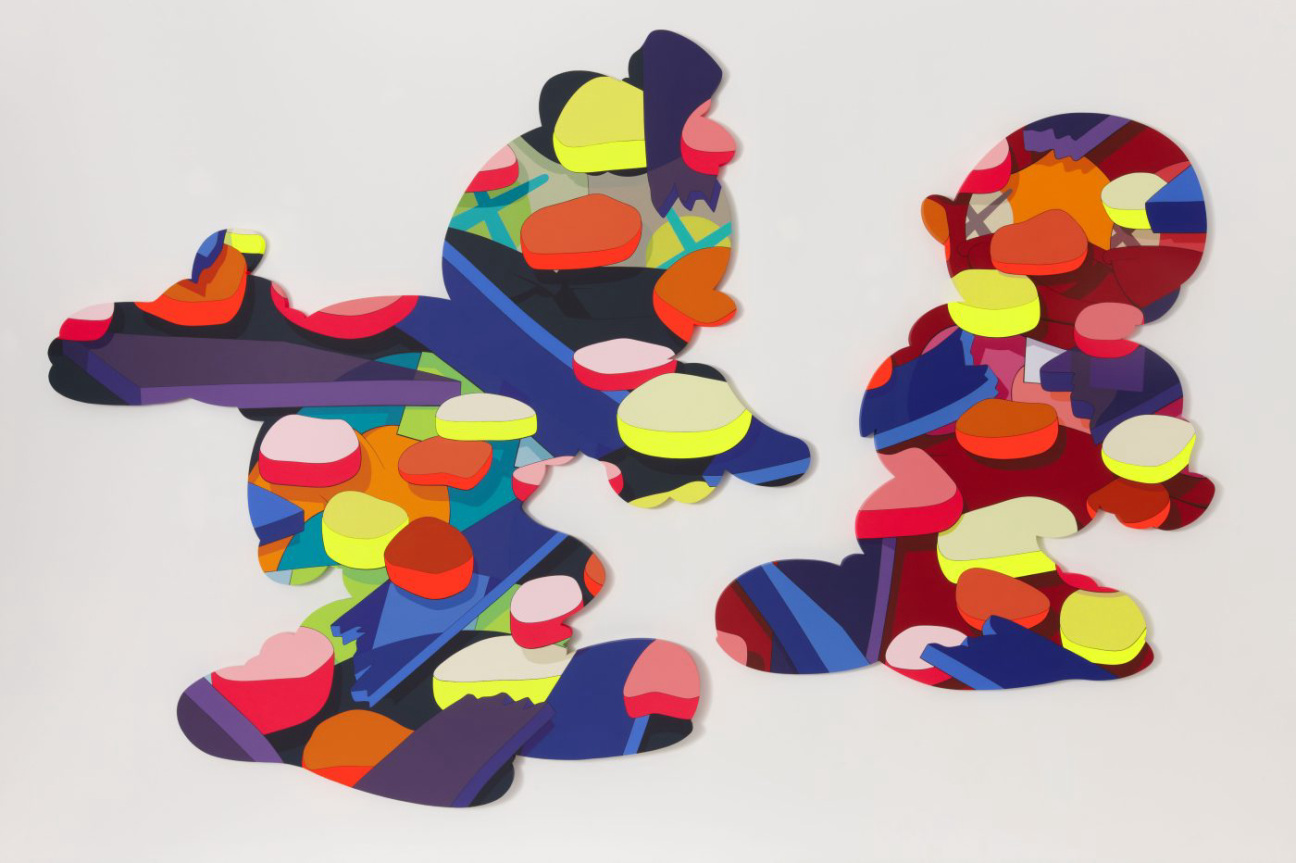
Chiang: You’ve often said that you weren’t a great student and you put it all into making art. If it didn’t work out you weren’t sure what you would’ve done. Looking back, did you imagine life as an artist would be like this?
KAWS: I didn’t know anyone working in the arts when I was young. As a kid, you’re pounded with this narrative of the starving artist. I always imagined I would have to find some job to subsidize the art I was interested in making.
Chiang: We talk about bravery a lot with our little kids. Back when you started doing graffiti, did you think you were brave? When we’re young, we feel a bit indestructible.
KAWS: I did feel indestructible when I was younger. Having kids humbles you a bit—suddenly, you’re responsible for someone other than yourself. I’ve become a bit more guarded, but I like to think when I take risks now, it’s for the benefit of all of us.
Chiang: I remember the first time I saw you speak about your work at the New Museum. We didn’t know each other back then. I was really impressed with how confident you were—crossing into the gallery world and knowing what you wanted to do. Often, artists are expected to be lost and insecure, and you were just bold and funny. Is that confidence what has allowed you to push boundaries in your work? Is your openness to many different modes of making an effort to connect with many walks of life?
KAWS: Wow, we should do interviews more often, you never share kind words like that! You were impressed? That was 24 years ago. See, I always knew you liked me before we started dating. Back to your question. It’s not that I’m confident in everything I do, it’s more that I’m curious about all these things and people in different fields. The art world can feel like one small bubble, and it’s a fascinating one. But there are so many other interesting bubbles out there.
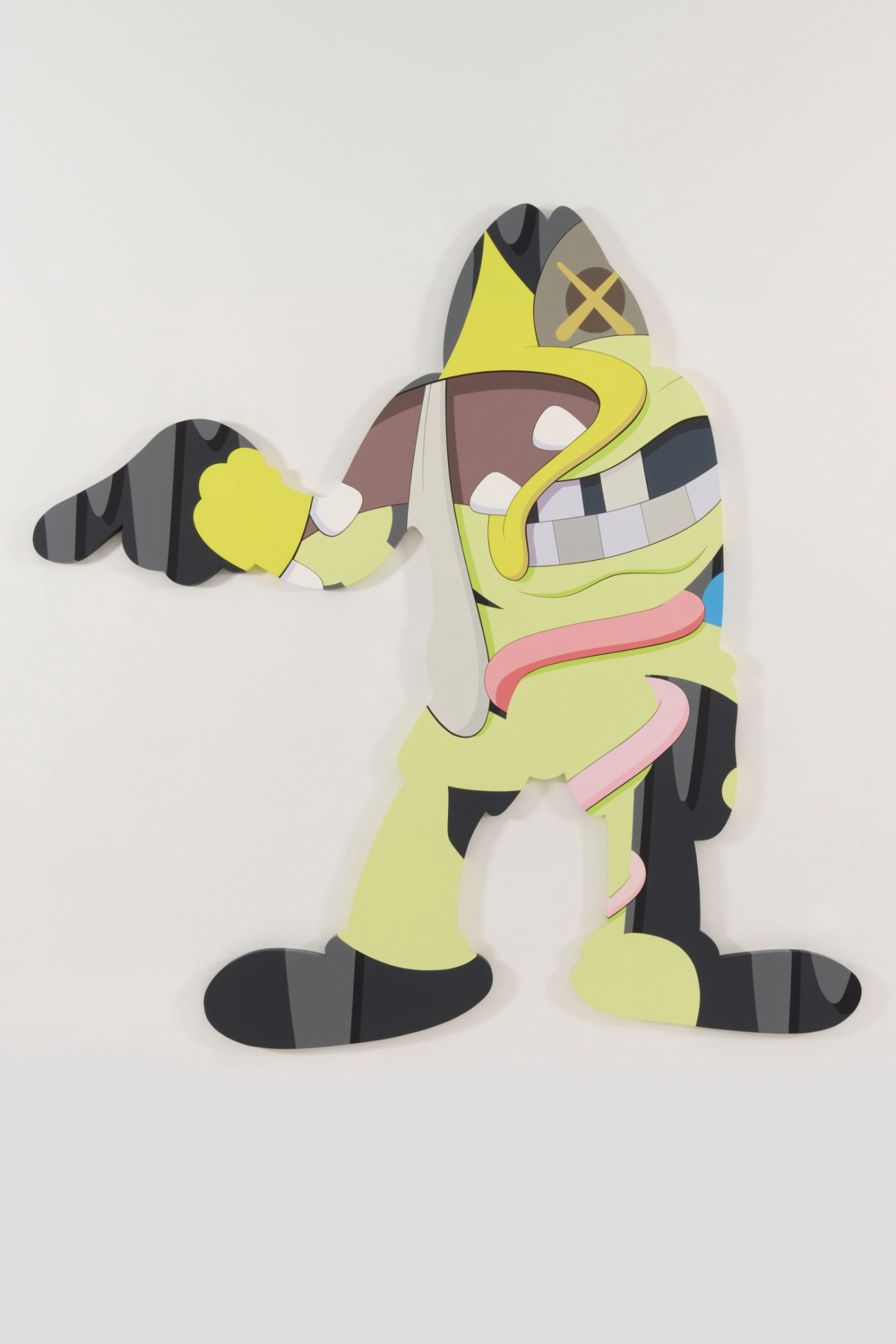
Chiang: It makes me think of your toys, your editions, your many books, your clothing… You reach so many people. You grew up in Jersey City not regularly visiting museums but connecting strongly to publications. Do you think many people find their way to a museum or gallery these days through someone or something in popular culture?
KAWS: Yes, there has been a long history of art cross-pollinating with music and fashion. Think of someone like David Bowie or artists Tadanori Yokoo and his many collaborations with Yohji Yamamoto, Dondi with Malcolm Mclaren, Futura 2000 with the Clash. But it’s only in the last decade or two that the general public has taken interest in the artists behind their favorite album art or clothing collection. As a result, that public is turning up at museum shows or gallery exhibitions.
Chiang: What about your own collecting? You’ve always collected. It has been limited by how much you can spend at different times in your life, but truly guided by passion, instinct, and gut connection. That visceral, immediate urge—do you think it’s connected to how you make your art too?
KAWS: I think it’s a good distraction from the work I make. It must somehow inform my art, but I also like the fact that I can have several deadlines and still find time to go down the rabbit hole figuring out the history behind a work I’m interested in.
Chiang: Your work is so detail-oriented and precise. Is there a part of your life that you allow to be a mess?
KAWS: I’ll plead the fifth on this one.

KAWS ASKS JULIA CHIANG
KAWS: Let’s start with the work you’re including in this exhibition. Is it mostly paintings?
Chiang: Mainly paintings and a few groups of ceramic pieces. All the paintings aside from one were made for this show.
KAWS: When did you start focusing on painting more than sculpture?
Chiang: I started having some fun with gouache and watercolor around 2008, and by 2012 was mostly painting. We became closer friends in 2009, and you encouraged me to let go of the question of whether you’re a sculptor or painter—to just make what you want to make.
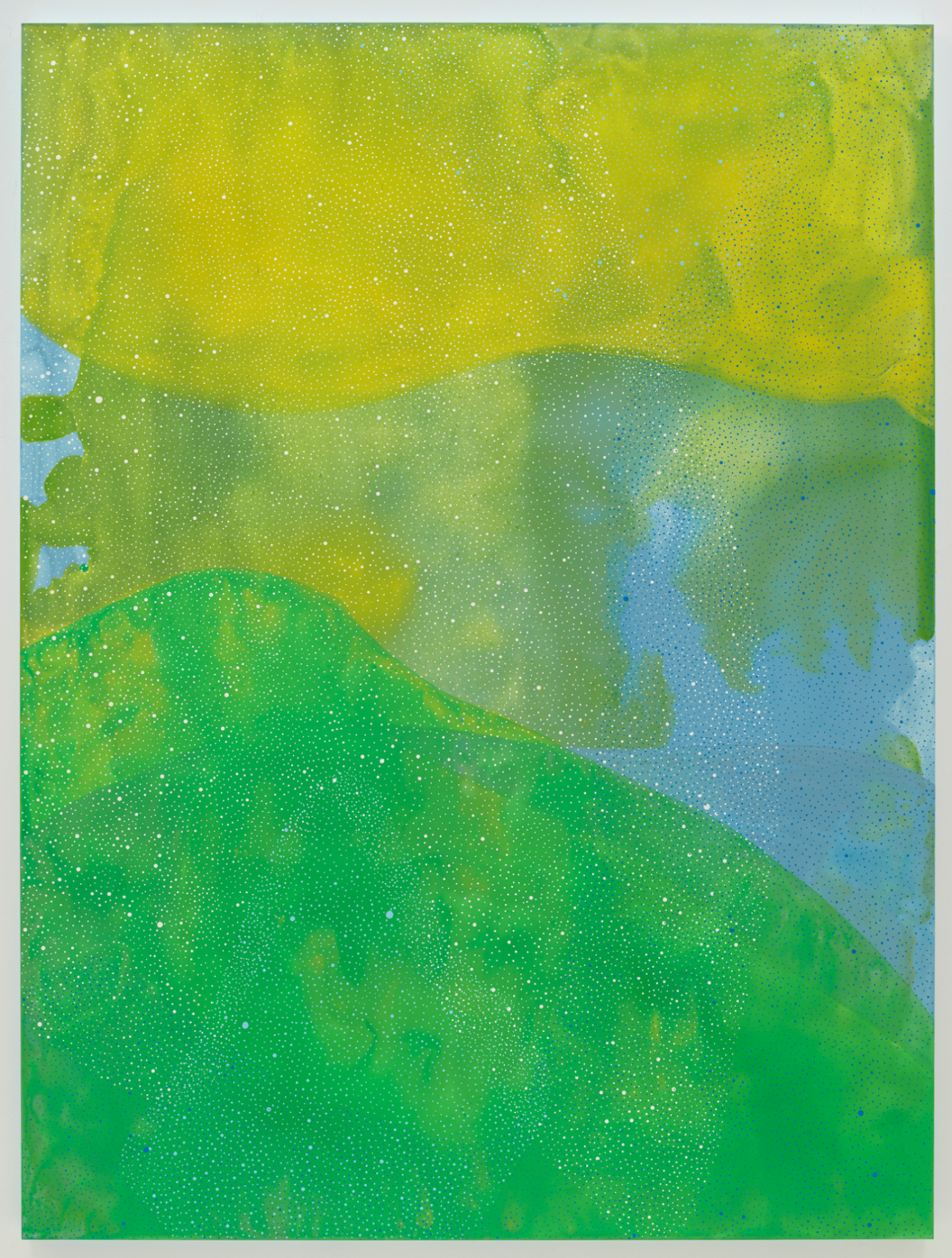
KAWS: You were a ceramics major when you went to New York University. What made you focus on that medium? Were there many opportunities to exhibit ceramics, and was there a community around that medium?
Chiang: I really stumbled into the ceramics department there. I was an art history major, and as a break from studying over light tables and slides—the kids are like, What? Slides? This was 1996—I asked if I could take studio art classes. There were only a few that non-art majors could take, and ceramics seemed the most exciting. I pretty much lived in the studio until I left school. Back then, ceramics were kind of shunned as a craft material. We were looking at artists like Ruth Duckworth, Peter Voulkos, Robert Arneson, Ken Price, Beatrice Wood… all amazing and it felt like they were unknown to non-ceramics folks. I loved the ceramics community, and mainly applied for ceramic residencies after school. We all felt a bit like outsiders, and I’m so thankful I had that support as I found my way.
KAWS: What are some of the challenges and rewards of working as an artist?
Chiang: I never thought I’d be a “capital A” artist, you know? I knew I would always make things, but I didn’t know I could make a life of it—to live a dream you never even had because you didn’t even know to dream it.
KAWS: What role does intuition and experimentation play in your work?
Chiang: A lot and a little! I go into making with a plan, and then I let the material self-direct—more so lately with pouring paint. I feel more open to experiment and let the material do its thing with ceramics. The nature of it is to be kind of out of control.
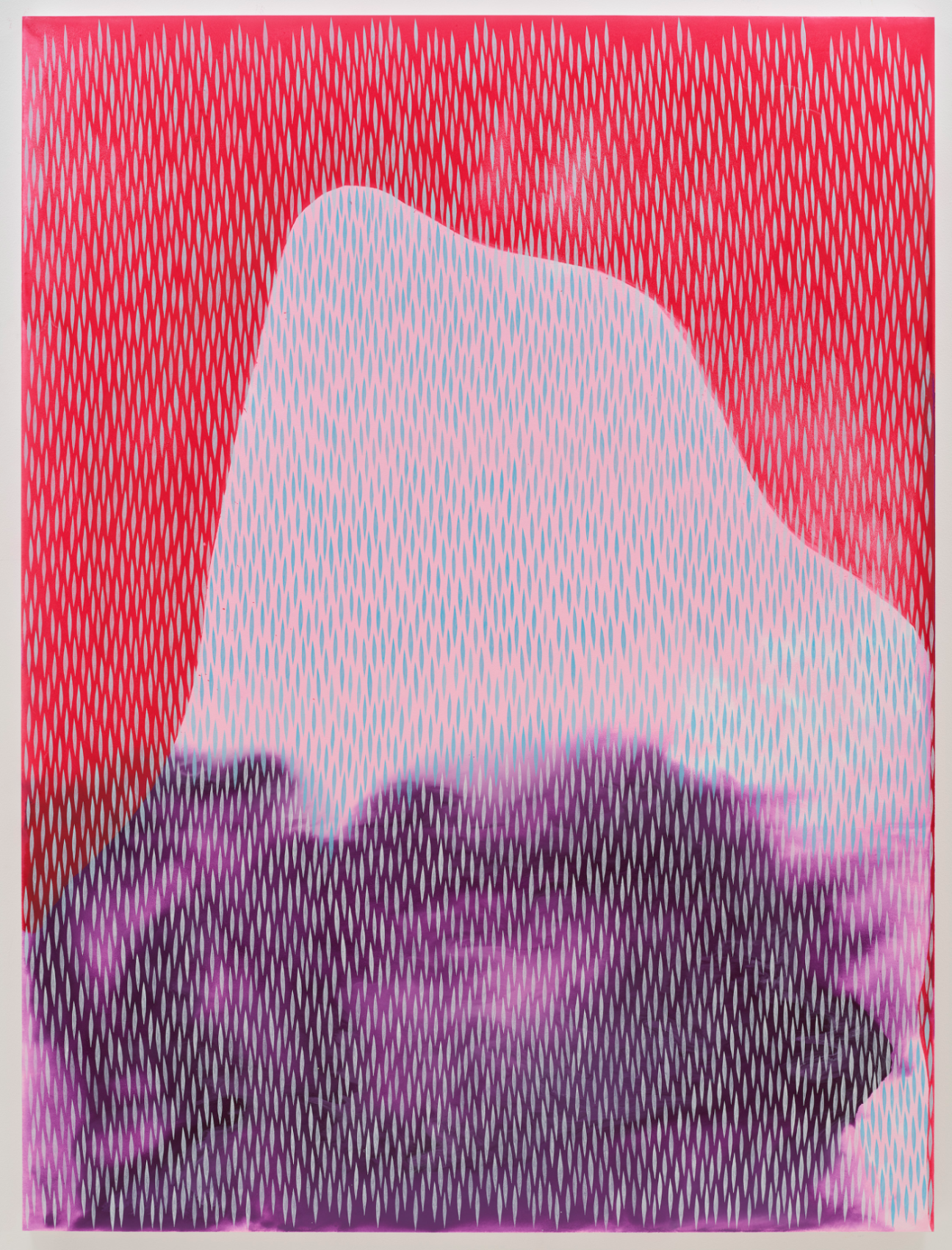
KAWS: You’re involved with Apex For Youth [an organization that empowers underserved Asian and immigrant young people in New York] and a few other youth-based organizations. How did art help you growing up in New Jersey?
Chiang: Apex for Youth is so important, and even though it doesn’t focus on art, it focuses on overall confidence and growth, and without that, it’s hard to see what you’re capable of. I grew up in a small town but was fortunate to have parents who believed in the importance of learning about one’s culture and beyond. We took regular trips into the city to visit Chinatown and the Met. I don’t think we ever did one without the other. Art allowed me to be okay with loving something without understanding it. My dad loves to make things, always tinkering. He taught me that it’s better to try to make or fix something than to buy it new. I grew up in a pretty strict household and drawing, collaging, making things was my safe space. I never could get in trouble if I was making something. I would sit on the newspaper rack, and my sister’s piano bench would be my desk. That was my zone. There are photos of me smiling there, crying there, always with a pile of papers and stuff in front of me.
KAWS: Can we talk about your titles? At what stage of the work do you attach a title to the piece?
Chiang: My titles are silly a lot of times. For some, I just like the way they sound. They do connect to the work for me, but it’s okay if they’re just absurd to someone else. I want my titles to say something but not say it all, you know? I write notes all the time. Over time, they become titles.
KAWS: What else are you getting into this summer?
Chiang: Lots of fun running around with the kids. Continuing to work on my upcoming show with the Modern Institute in November. And, hopefully, our first family trip to mainland China for your project in Shanghai!
"Julia Chiang: The Glows and the Blows" is on view at the Parrish Art Museum in Water Mill, NY, through October 13, 2024.
"KAWS: Time Off" is on view at the Parrish Art Museum in Water Mill, NY, through October 13, 2024.










 in your life?
in your life?

